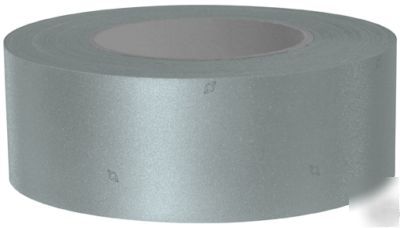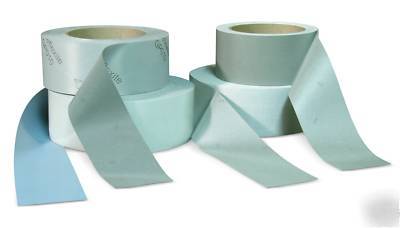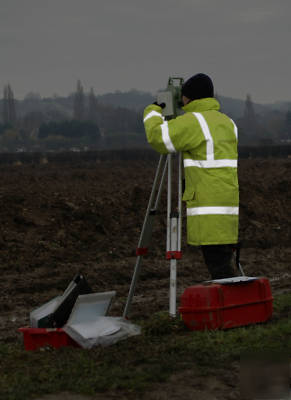EXCLUSIVE FORUM FOR MACHINE DISMANTLERS AND REPAIR PEOPLE > East Chicago
> Heavy Machinery
> Electrical
> AC Single Phase
> 110v
> 2" x 656' reflexite heat applied reflective material
2" x 656' reflexite heat applied reflective material
1 ROLL OF 2" X 656' OF REFLEXITE HEAT APPLIED GLASS BEAD GARMENT TRIM
* THIS IS FOR A ROLL OF THE GP025 - Mid Range Heat Applied 25 wash
PRODUCT BULLETIN http:// /literature/bulletins/Reflexite_Glass_Bead_GP025_PB.pdf
Reflexite GP025 Application Instructions
Reflexite GP025 reflective garment tape is a tough, flexible tape suitable for application to most fabric substrates. The
tape is designed to be heat applied to suitable background fabrics for use on ANSI/ISEA 107-2004 High Visibility Garments.
The reflective trim applied to finished garments should measure a minimum of 450 cd/lux/m at 0.2 Observation angle &
Reflexite GP025 should be applied using the recommedations below, however converters are also advised to determine
which configuration best suits their substrate based on their individual equiment. These conditions will vary depending on the
type of equipment, age, model etc & should be evaluated accordingly to select the best processing condtions. Due to
differences between fabric lots and the possibility of coating variation and contaminates on fabric substrates, the
manufacturer is required to test Reflexite GP025 on the actual substrate before commencing production.
The below guidelines are for continous heat press and stationary press lamination and are recommedations only.
It is important to ensure the equipment being used can apply uniform heat & pressure during the lamination process.
Ensure that the temperatures in each zone of the press are uniform across the width of the press. A handheld infrared
thermometer is recommended when setting up to compare settings with actual conditions in the heat press.
A tachometer is also recommended for setting the correct belt speed.
As there can be great variability in the fabrics produced, variability in chemical treatments used on fabrics, and variability in
the fusing methods and equipment, it is important that these parameters are evaluated for each application, and it remains
the responsibility of the user to test the specific fabric to be sure that the adhesion of Reflexite GP025 is satisfactory.
Pre-Heat the press to the settings in Table
1 or Table 2 depending on substrate type
and type of press. The temperature
settings in Table 1 and 2 are equipment
set points. Best performance is achieved
by controlling tape exit temperatures
(typically 10o C below the equipment
It is necessary to determine if the chosen
substrate will shrink at the above
temperatures. To do this place a sample of
the fabric on a flat table & mark a 100mm x
100mm square on the fabric using a
permeant marker/pen. Pass the sample
through the press. Allow to cool & meaure
the % reduction in size, if the % reduction
is greater than 3% in either direction then
the substrate will need to be pre-shrunk in
For best performance tape corners should
be configured on the garment to allow them
Fabric Substrate Temperature Time Pressure
PVC Coated 145 OC 17 sec 1 Bar
Polycotton Blends 170 OC 17 sec 1 Bar
Table 1 Operating Settings for a Continuous Heat Press
FabricSubstrate Temperature Time Pressure*
PVC Coated 150 oC 24 sec 0.5 Bar
PU Coated 150 oC 24 sec 0.5 Bar
Polycotton Blend 150 oC 24 sec 0.5 Bar
Polycotton Blend 180 oC 24 sec 0.5 Bar
Table 2 Operating Settings for a Stationary Heat Press
* = Pressure measured over entire press area
GP025 is provided with a protective liner
on both sides of the tape. The Adhesive
side (blue PE) liner must be removed
prior to fabric lamination. The reflective
side (white opaque PET) liner should be
left on until after lamination is complete.
In cases where more heat is required to
properly laminate to a given fabric both
liners may be removed in advance;
however, tape non-uniformities may
Place the tape with the adhesive side
facing the substrate. Do not stretch the
tape as it is being applied. For best
results ensure that the temperature and
pressure are uniform across the width and
through out the length of the press.
Allow the protective liner to cool to room
temperature before stripping the liner, to
remove lift the protective liner at one edge
& separate from the reflective surface by
gently pulling back onto itself.





